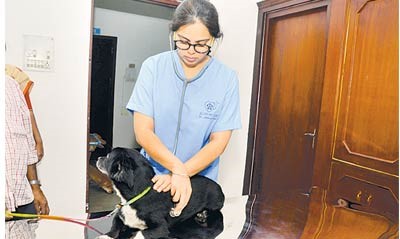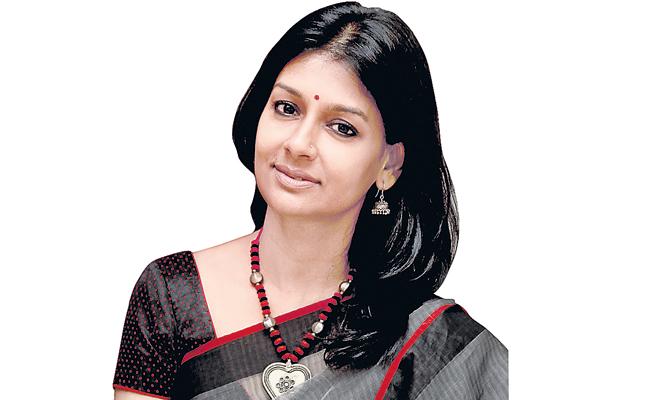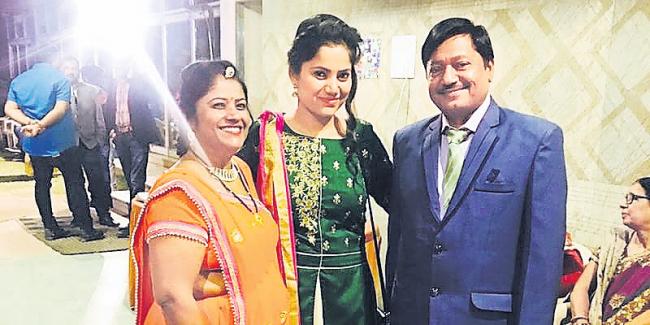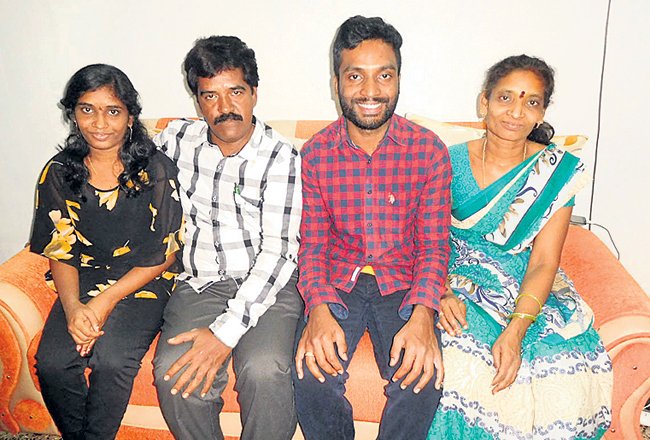No Results Found
The page you requested could not be found. Try refining your search, or use the navigation above to locate the post.
No Results Found
The page you requested could not be found. Try refining your search, or use the navigation above to locate the post.
Speaking Kashmiri across the Kremlin
Russia — a place of sparkling cities, empty golden palaces, and churches that are museums
Four summers ago, I decided to drive from London to Moscow. We never did it. Fear of the old car breaking down, fake Russian police and potholes on Russian roads. An internet advisory also said that Russians reserve their smiles for family. I had no family in Russia. But in my heart, Russia was different. Ivan fighting dragons, Siberian tents, Babushkas with samovars. And the cosmonauts. My Russia of the Indian 70s was charming, mysterious and ambitious.
Russia was the only alternative to America. I remember telling a cousin, that if I left India, I would go to Russia, but it wasn’t glamorous like America. And we had laughed. That was Russia then: solid, dark and grey. America was all sparkle, dazzle. Then Russia crumbled (we never called it USSR), and many things changed forever. Including India. Including Kashmir.
This year, Russia surfaced again. Our children were amused by my descriptions of Russia. For them, Russia was Stalin, Lenin and the Tsars, from their history books in England. We flew to Russia. Moscow sparkled, dazzled. Neon buildings, wide roads, a buzz. Even St. Basil’s Cathedral, a museum in the Red Square, had a Disneyian luminosity. The striped domes of the museum tapered into golden crosses; the sight was magical, surreal.
The Moskva river was on fire, like the Vegas strip, all shimmer and glimmer. The evening boat plunged like a dragon into the waters, gulping down the glittering city. And no Ivan in sight. My childhood Russia had changed. Then I saw the sky-high walls of the Kremlin, and their endless red girth. It brought a strange chill. Inside the Kremlin walls were cathedrals, now museums, beautifully painted, elegantly designed. Inside the frames of gold were apostles. Inside Kremlin’s gilded rooms were Tsars.
The Tsarist cocktail of church and chair, God and governance, was toxic. It had made the Soviets pull religion out of Russia and turn the churches into museums.
The Izmailovsky flea market was all dolls, birch souvenirs, Soviet relics. Stacked on shelves and spilling on the pavements were paisley scarves and furry Siberian hats. I had landed in the Russia of my storybooks.
The famous Matryoshka dolls of Russia. Photo: Getty Images
In the middle of a bunch of pretty Matryoshka dolls, I saw three dolls of Stalin, Putin, Trump. I had read somewhere that Matryoshka dolls were ‘full of themselves’. The man behind the stall smiled.
Outside the flea market, on the verge of the road, men and women sold beads, scarves, belts, cups, books. On seeing a police officer, they wrapped up their wares. As he walked away, they unrolled their homes again, settling for quick bargains.
In St. Petersburg, at the Tsar’s palace, the audio guides were in Russian, but I heard how the Tsars lived. The gold, the gems, the grandeur and the gods spoke. Inside a fortress was a prison where the Tsars had trapped all revolts and muted all the voices of Russia that were poor and bold.
“Then the Bolsheviks took over,” said my son.
I paused.
“Have you heard of Stalin’s horrors?” he said.
Was this what my children thought of Soviet Russia?
“What about Sputnik and Yuri Gagarin? And India’s first cosmonaut in a Russian rocket?” I said.
My children did not know Yuri Gagarin or Rakesh Sharma. They knew Neil Armstrong and Buzz Aldrin. They stuck to their history and I to mine. I was in no mood for discussions on Russian history that night. Or Russian food. Like your taste buds, it’s hard to mould your histories.
The Kashmir connection
The Indian restaurant had a Russian samovar on the drinks bar. A tall, pale-looking waiter swaggered towards us. In his 20s, he had an impatient, don’t-care streak about him. His accent had an Afghani lilt.
“Where are you from?” I asked, curious.
“Kashmir,” he said.
I went still. Had I forgotten what Kashmiri accent sounded like?
I spurted, Koshur chhui sa tagan? “Do you speak Kashmiri?”
The young man stopped in his tracks, he went quiet for several moments. There was a flicker of fear, a flash of recognition, then a rollback to a time when Kashmir was peaceful.
Ahan haz, he said, “yes,” his tone deferential.
He lived on the Dal Lake in Kashmir, he had his own boat there. He wanted to talk more. I went to university by the Dal Lake. I wanted to talk more. In between the forks, knives, kebabs and the curries, Kashmiri slipped in. It wove silken threads, carved a conversation, broke some ice.
“How is Kashmir?” I said.
“Bad, very bad,” he said. Was that how you described Kashmir now? In two words?
I noticed a Kashmiri samovar next to the Russian samovar. Delicate, dignified, emanating a coppery red glow. His name was Atif. “I was born after 1990.” He hesitated, then said, “In your days, you used to study, my father told me.”
He was talking of a past he did not know. And the Kashmir he knew, I would not understand. It was a dialogue between two Kashmiris separated by three decades, raised with different histories. It was like a conversation between my children and I about Russia.
If Kashmir was not at war, it would have been home. We would have shared the same history.
After we ate, Atif negotiated with the taxi driver. It took him long, but he persisted. My son was amused that he spoke to the taxi driver in Russian and to me in Kashmiri. I always thought there was something common about the two accents.
“Tomorrow,” said Atif, “I will organise a bigger car for you.”
I didn’t know if I would see him again. Or hear Kashmiri spoken in Russia and have a floodgate of memories open. In Kashmir, this would have been a hug.
“You were at university when I was not even born,” he said. “For that I salute you,” he mumbled.
As we drove away, Atif waved as one would bid farewell to a family member. Waiters don’t call taxis for you, translate for you, negotiate a price and then salute you. My eyes filled.
Russia is now a memory of sparkling cities, empty golden palaces and churches that are museums.
It’s also the quiet, bold man with the Matryoshka dolls.
I will remember that I spoke Kashmiri in Russia. I will remember Atif, and his carefree, caring manner. I hope religion and rule don’t merge where my children live. So that they can be in their homes. So that God can be.
Note: Names have been changed to protect identity.
The writer was born and brought up in Kashmir, and lives in London. He writes short stories about Kashmir.
Modena with a lil tang
Modena with a lil tang

We were excited. As we looked forward to Italy, and hopped onto a flight from Delhi via Chennai to Dubai. And finally, we were on a flight to Bologna via the Bologna Marconi Airport, and onward to Modena. Modena is a province in Italy well-known for its balsamic vinegar. The strong flavour lingers on your tastebuds, much after you have tasted it. But, there’s more to the quaint old city than its impressive culinary offerings. The view of the city has a vintage essence with a modern touch that endears itself to any traveller. People are dressed in non-fussy, comfortable and airy clothes. One can see people of all ages cycling in and around the city. Modenese weather is predominantly pleasant in the months between July and September.
The staple meal here is low in salt and spice, yet it has a mild yet distinct flavour. You can carry Indian pickled items if you cannot do without the regular spice. In case you wish to give your tastebuds a change, then indulge in the many faceted Italian cuisine.
 A Modena street
A Modena street
Modenese cuisine offers a range of mixed meat, pasta, parmesan cheese to tantalise the tastebuds of the discerning foodie. Clearly, the dishes have a distinct European taste. One can try out tinytigelle (flattened pita bread) with turkey fillet, Pasta with tecaa sauce, a preparation of mushy baby tomatoes in olive oil and salt. Coconut flavoured ice cream and Jamaican dark chocolate ice cream are delectable here. Options for vegetarians are mostly potatoes, greens and beans. Each restaurant has a unique menu, so you will find yourself trying out new dishes at every new place.
Italy being the land of Pizza, offers some of the best Margherita pizzas that can be a treat to cheese lovers. Put this on your bucket list right away!
 The architecture in the town has an old world charm
The architecture in the town has an old world charm
We stayed at a place in Emilia Centro which is close to the Piazza Grande, the old town square where there is a confluence of culture and hustle. It exudes a 17th century vibe, that’s so beautiful, it almost feels surreal. The church is a must-visit, and the spot is a far cry from a city’s daily bustle. There are tiny markets surrounding the area, which are moderately crowded but the peace and quiet aren’t disrupted… And it looks spectacular late into the evening. During the day, one can take a long walk around the city to get a glimpse of culture. Shopping too can be a fun experience, if you spot shops and supermarkets offering reasonable prices. You could buy a souvenir for 1 Euro. From the best red wine at an affordable price, to delicious and healthy dark chocolates and a slew of different varieties of olive oil, dry pasta and olives, you can literally go crazy at the local markets here.
The Cathedral Church in Modena has an aura of serenity. Via Tagilio is also another beautiful spot with walking areas, open cafés and restaurants.
While the inhabitants speak predominantly Italian, you might find English written in a few places, and probably the hotel staff might also know a bit of English. It would be handy if you could learn a few conversational sentences before you decide to travel.
Overall, our trip to Modena was a fun filled experience. This is a place where an itinerant traveller can truly embrace this warm and easy going vibe of the destination. The people are warm, non-intrusive and expressive. Carry a bottle of water as the long walks can be tiring after a while. Eating at restaurants and taking a cab can cost you a bit, so wear those walking shoes, and traipse from one quaint corner to another. You could choose to take the local transport such as a train or bus to get the feel of the place as well.
The stay at Modena is an experience that will remain with you. Do embrace the experience, and enjoy!
The writer is based out of Pondicherry, and has authored a book titled, Something between you, me and us.
Top destinations to enjoy the outdoors in the
As winter temperatures drop, the thought of a warm-weather getaway becomes increasingly more desirable.
While snow might be falling in some parts of the country, the USA has a wide range of landscapes, from beaches to deserts that boast temperate climates and make for perfect winter escapes.
If you are looking to get outdoors this winter, consider the following six destinations:
1. Caladesi Island State Park, Florida
A 40-kilometer drive and ferry ride northwest of St. Petersburg, Florida, Caladesi Island is known for its tranquility and romantic seascapes. The climate is perfect this time of year, with an average high of 23 degrees Celsius. There are plenty of great activities like sunbathing, hiking and kayaking through the mangroves and bay to explore in this Florida state park.
2. Molokai, Hawaii
Molokai – located about 40 kilometers off the southeast coast of the island of O’ahu is accessible by boat or plane. It is home to Kalaupapa National Historic Park. Perched on the north shore of the island, the park offers breathtaking views of the Pacific Ocean made more enjoyable by an average temperature of 24 degrees Celsius. While on the island, you can explore the fishing town of Kaunakakai on the southeast part of the island or the stunning Halawa Valley on the east end.
3. Scottsdale, Arizona
January is the best time to visit Scottsdale, Arizona. Sandwiched between Phoenix and Tonto National Forest, this city experiences comfortable weather (temperatures average 20 degrees Celsius) as opposed to the extreme desert heat it experiences in the summer. The winter climate is perfect for golfers, who flock to the many courses found in central Arizona. For views of the desert, hike the 2-kilometer trail leading to the summit of Camelback Mountain, which reaches an elevation of 824 meters.
4. U.S. Virgin Islands
This tropical paradise in the Caribbean is made up of three islands: St. Thomas, St. John and St. Croix. Each island offers something different. You can enjoy shopping and al fresco dining on St. Thomas; explore the beautiful crescent beaches and Virgin Islands National Park of St. John, and visit the stunning Buck Island Reef Island National Monument and unique Dutch architecture of St. Croix. And you’ll find stunning beaches ringing all three. The temperatures hover around 25 degrees Celsius this time of year, and the islands are only a 2½- to 3-hour flight from Miami, Florida.
5. Austin, Texas
For a warm-weather getaway that’s also full of unique and quirky charm and culture, head to Austin, Texas. The city rarely sees temperatures below 17 degrees Celsius, which make its outdoor attractions more inviting. Spend your time boating on Lady Bird Lake in the center of the city, or spend some time exploring Zilker Botanical Garden, which features 10.5 hectares of plants and walking trails.
6. Palm Springs, California
There’s more to Palm Springs, California, than palm trees. You can admire sweeping desert views from the top of the aerial tramway, and stroll amid the downtown area’s Spanish-style architecture and world-class museums. There’s no need for jackets since this city stays 20 degrees Celsius or warmer all winter long. This luxurious destination is only about 170 kilometers east of Los Angeles and 200 kilometers northeast of San Diego, California.
No Results Found
The page you requested could not be found. Try refining your search, or use the navigation above to locate the post.

Priyanka Chopra welcomes her sister-in-law with this heartfelt post
Priyanka Chopra recently flew down to Delhi with her husband Nick Jonas for her brother Siddharth Chopra’s roka ceremony. An excited Priyanka shared beautiful pictures from the roka ceremony and also congratulated the couple. She also welcomed her to-be sister-in-law...
read more
George RR Martin turned down cameo in ‘GOT’ final season; read why
"Game of Thrones" creator George RR Martin has revealed that showrunners of the hit HBO show had offered him a cameo in the much anticipated season finale, which he was "tempted" to take up. The writer said he rejected the role as he did not have time to fly to...
read more
US, UK, France move UNSC to ban Masood Azhar in fresh proposal
The US, the UK and France have moved a fresh proposal in the UN Security Council to designate Pakistan-based terror group JeM chief Masood Azhar as a global terrorist, a listing that will subject him to a global travel ban, asset freeze and arms embargo. The fresh...
read more
Must respect sovereignty, territorial integrity of all nations: China to Pak
Amid India-Pakistan tension, Chinese foreign minister, Wang Yi told his Pakistani counterpart, Shah Mahmood Qureshi that the sovereignty and territorial integrity of all countries should be respected. Responding to an “urgent” late night phone call from Qureshi, Wang...
read more
Have reasonably decent news from India, Pakistan: Trump in Hanoi
US President Donald Trump said on Thursday he hoped the conflict between India and Pakistan will be coming to an end after the two nuclear powers clashed across a contested border in the disputed Kashmir region. Speaking at a news conference in Vietnam after a second...
read more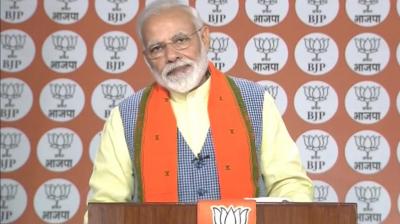
Enemy trying to divide us, India will fight as one, win as one, says PM Modi
Ignoring the opposition attack, Prime Minister Narendra Modi addressed millions of workers of BJP on Thursday. Modi said, “India will stand as one, India will work as one, India will grow as one, India will fight as one, India will win as one." "When the enemy...
read more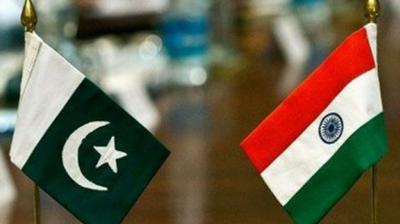
No deal, rules India on pilot; Pakistan FM says release if de-escalation
India expects immediate release of Wing Commander Abhinandan Vartaman, government sources said on Thursday, rubbishing any suggestion of a deal over him. India has not asked for consular access, sources said, warning Pakistan that the pilot was no card to negotiate...
read more
Pak will free pilot tomorrow after India pressure on unconditional release
After India demanded that captured Wing Commander Abhinandan Varthaman be released without any condition, Pakistan Prime Minister Imran Khan has said that the pilot would be released as a peace gesture on Friday. Earlier on Thursday, India had strongly reacted to...
read more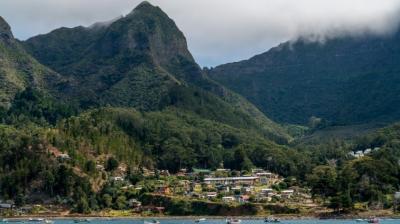
Chilean island sets an environmental precedent
For almost a century, the inhabitants of Robinson Crusoe, named for literature's most famous castaway have known that their island's fragile ecosystem depends on them conserving its unique wildlife. One of three islands in the Juan Fernandez archipelago, 700...
read moreSleep disruption post childbirth
A child’s birth has a drastic short-term effect on new mothers’ sleep, particularly during the first three months after birth. Research conducted at the University of Warwick, also found that sleep duration and satisfaction is decreased up to six years after giving...
read more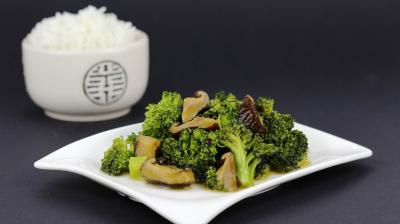
Get the perfect roasted broccoli florets
Roasting might just be the best way to cook vegetables. Roasting is a fancy term for cooking food in a hot oven. The intense heat causes excess moisture to evaporate, leaving a crispy, browned exterior. And all that browning makes food taste better. Roasting is a...
read more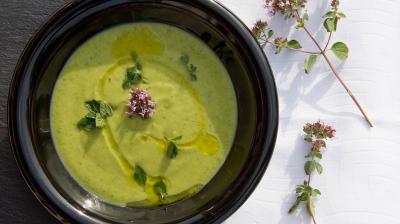
A healthy serving of nutrition packed soup
e-Paper | Sunday Chronicle Auto Refresh | Corporate Insolvency Resolution Process Tuesday, Feb 26, 2019 | Last Update : 07:52 PM IST Nation World South Entertainment Sports Technology Lifestyle Videos Gallery Business More... LIFESTYLE, FOOD AND RECIPES A healthy...
read more



